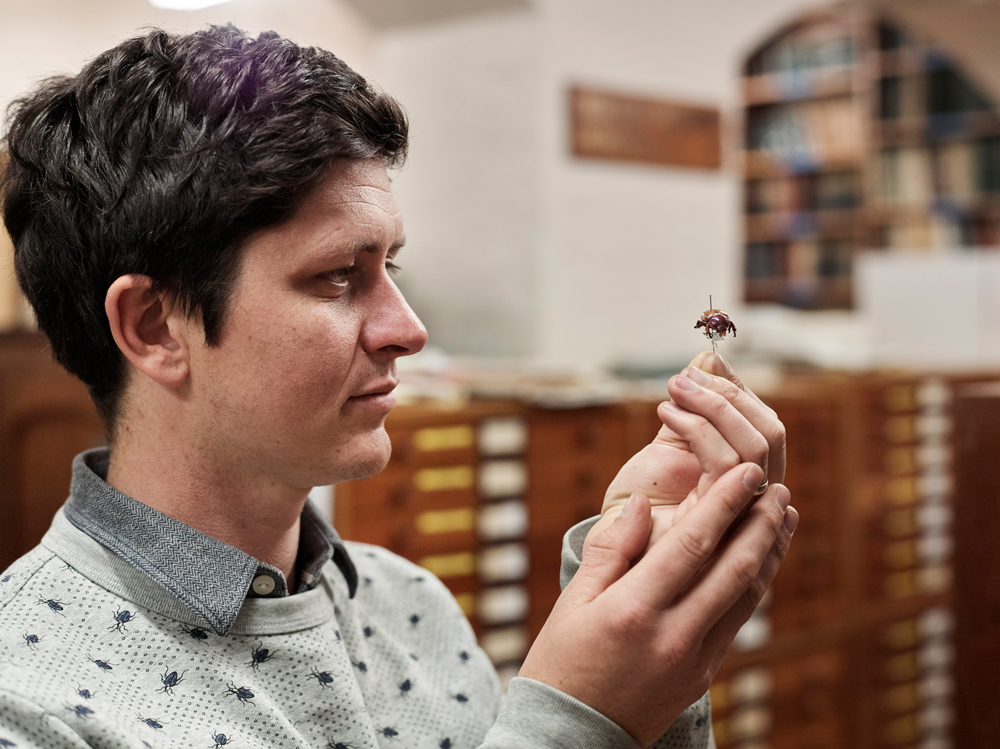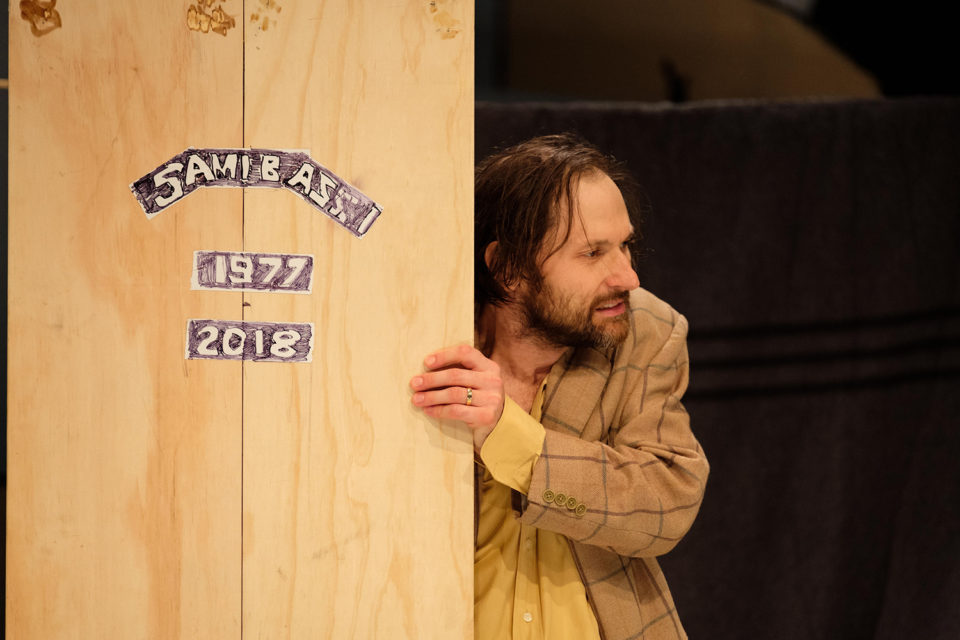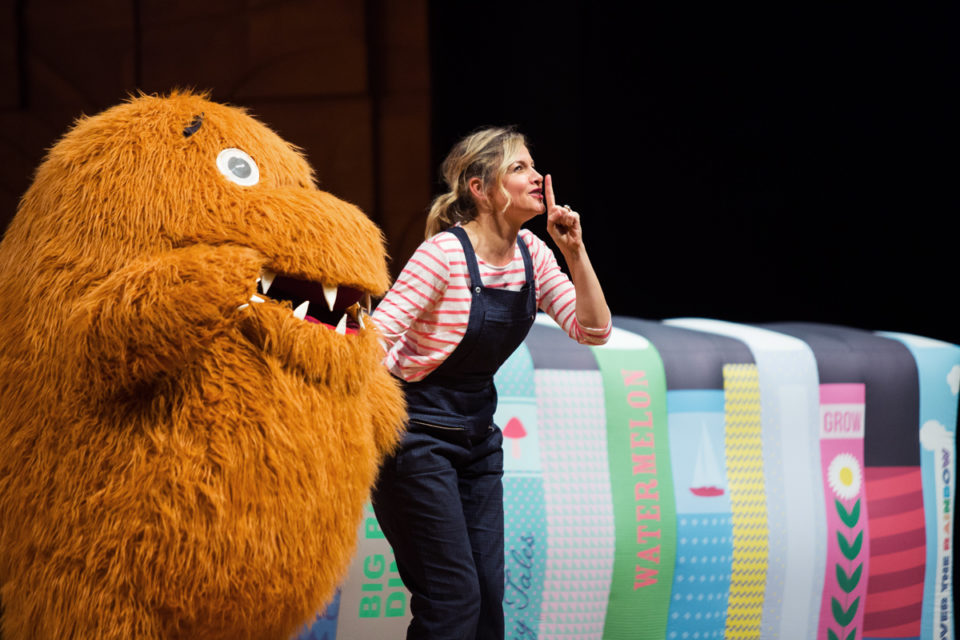Robert Blackburn sees things in the city that others don’t. If things are missing, then Blackburn notices that too.
The 30-year-old urban entomologist heads to work at the University of Sydney from his Marrickville home, his back rounded, almost beetle-like, with the weight of his backpack as he stares squarely at the ground. Suddenly he stops and crouches down – a trail of ants are ferrying crumbs from a discarded chips packet.
“Ants spend their lives picking up things and putting them elsewhere,” he says. “They’ve just gone, ‘heck yeah!’ and told all their friends – I mean sisters – to come and get these crumbs and take them back to the colony.”
“Almost all ants in a colony are female and are related,” he explains excitedly. “Did you know they don’t always need an egg or a sperm to make a new ant, sometimes the Queens can hatch eggs on their own.
“In the insect world there’s always another way of doing things. That’s why it’s so cool.”
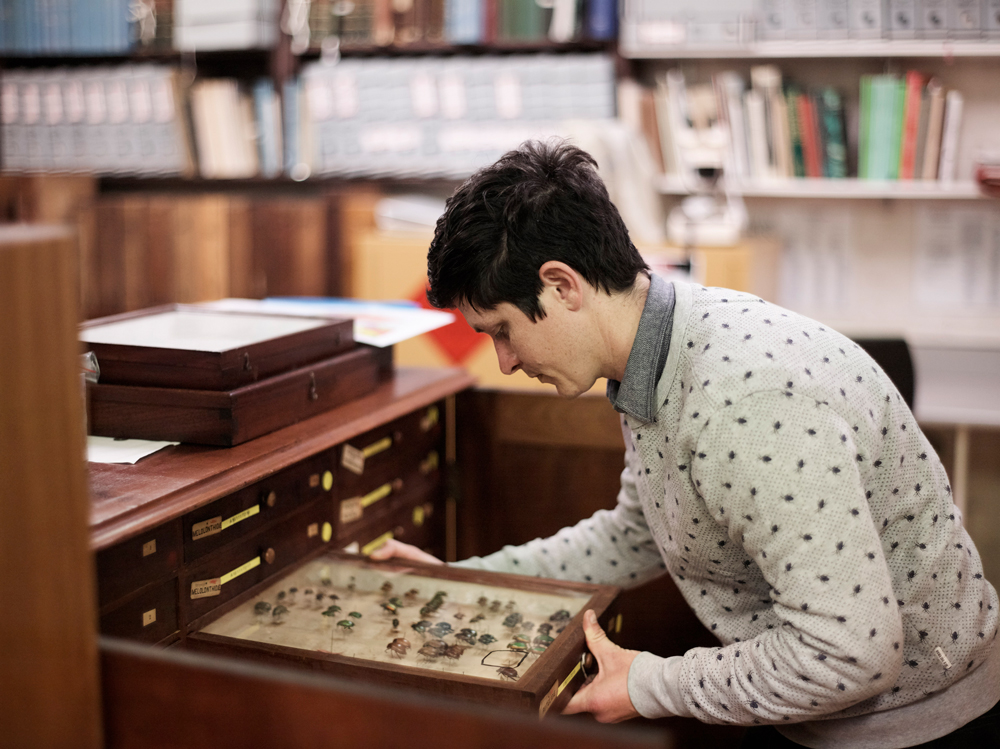
Robert Blackburn at the Macleay Museum Collection. Photography by Nick Gascoine.
By day, Blackburn, is an assistant curator for the Macleay Museum. By night he is a naturalist studying the insects that fly into his bedroom window. His home freezer is “full of bugs,” he says, mentioning a recent find of a beetle which he killed with ethanol, “it’s like giving them a shot of vodka sending them to sleep.”
At work – a basement room at the University known colloquially as the “ento-store” – he opens a wooden cupboard. “Genus: Anoplognathus,” Blackburn whispers as he removes the Christmas beetle drawer and places it gently on a table top. “Aren’t they cute?”
Blackburn opens the glass casing to expose rows of iridescent 19th century beetles in shades of golden brown and metallic green. Removing a pin from one and holding his breath so as not to “lose” the 200-year-old beetle, he picks it up with a pair of tweezers.
“In the Sydney CBD, a lot of people bemoan the loss of the Christmas Beetle,” he says. Although the species decline is “anecdotal,” back in the 1920s records showed the Christmas beetle, thus named because it usually appears around December, was so common in the harbour area that branches of trees were weighed down by armies of them. Blackburn states he is not specifically a beetle expert – his colleague, Australian Museums principal research scientist Dr. Chris Reid “is the authority there,” he says.
But Blackburn links the elusiveness of the Christmas beetle with their loss of “ecological community or Biome.” In layman’s terms, he explains that an ecological community is the “type of area” an insect inhabits; for example; “a heath, sandstone or bushland,” and the Biome is “an insect population” which is affected by the “specific plants” within that ecological community. In the case of the Christmas beetle, its larvae feed on roots of plants and the adults feed on eucalypt trees. In the Sydney city centre prime beetle habitat is being eroded with the spread of housing and landscaping practices.
He delicately places the glass sheet back over the insect collection.
“The loss of these more charismatic species is problematic because people notice it. For Sydneysiders, not having that yearly reminder that nature goes on without us is something that is lost.”
Blackburn believes the collection he works with is unique. It dates back to the 1800s. He explains, “the major sister collection would be at the British Museum.”
He buzzes from drawer to drawer displaying autumn-coloured moths, lime green weevils and a cornucopia of butterflies. “Some of this is an in-depth history of Sydney, some of the world.” One exhibit is a single feather louse from Captain Cook’s second voyage. Beside it is a large 240-year-old Goliath beetle that “might have been traded for people”.
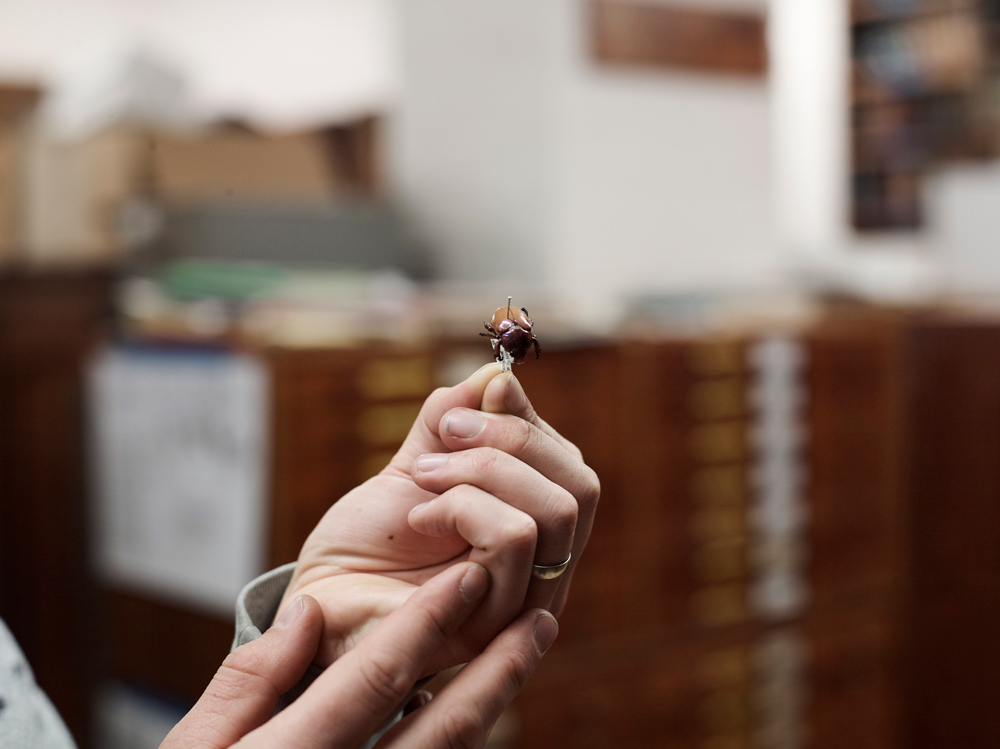
Christmas Beetle. Photography by Nick Gascoine.
It is dark before Blackburn leaves the cocoon of the ‘ento-store.’ Tonight he is off to “bug club”, an after-hours gathering of research scientist who love to discuss their insect passion. Blackburn’s backpack holds an old matchbox containing a ‘home-catch’ – a dead moth, the wings of which are patterned with black and amber rings – which he is taking to sh
He pauses to examine a tree branch, the leaves are cut into a perfect half-moons.
Blackburn explains that a leaf cutter bee has been there, and that the bee will use these tiny pieces of leaf to weave a cradle for her eggs.
“Insects leave their mark everywhere. They’re an endless source of fascination.”



